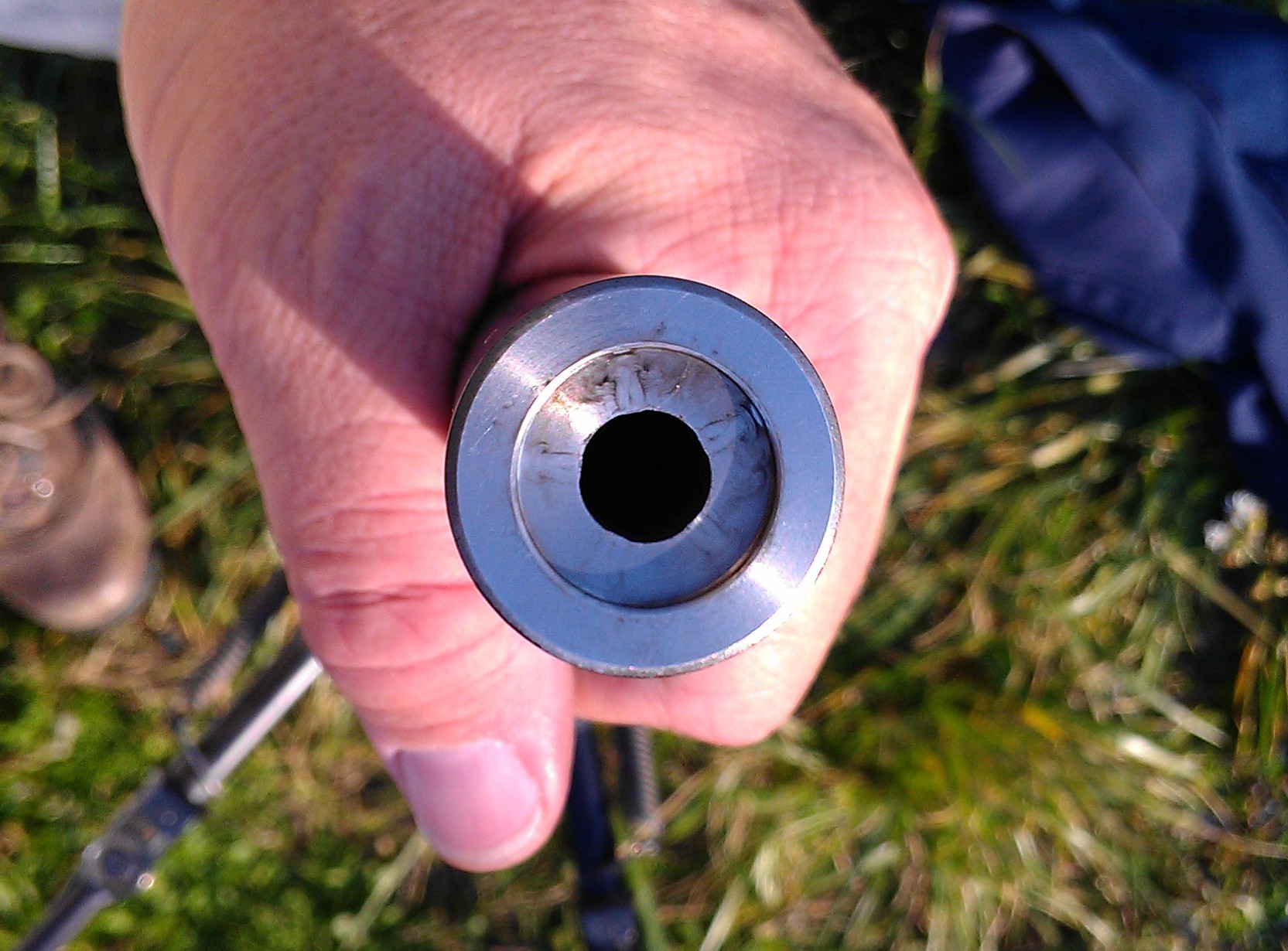Just wanted to see how others are doing it?
I like to put the muzzle end in a 4 jaw and the chamber on a dead center, then indicate the muzzle end to within .0002.
With the chamber end on the dead center, I turn it to .001 above the desired diameter.
I then put the chamber end on a steady rest, double check concentricity to the bore and cut the tenon, bolt nose recess, set the bolt lug/nose clearances, then cut the chamber and headspace it.
Then for the crown I flip the barrel and put the chamber in the headstock, indicate to within .0002 and put the muzzle end on a dead center and check concentricity of the muzzle end with the bore. If it isn't perfect, I turn the muzzle end on the dead center to .001 above the desired diameter.
Then I put the muzzle end on the steady rest, double check concentricity and make sure its good to go.
I make a clean face cut, then cut the muzzle face to the desired shape, ie 11 Degre, recessed, etc. My personal preference is a recessed crown.
Next i set the compound rest to 30 degrees, and while turning the headstock by hand, cut the actual crown, the end of the lands transition into the face of the muzzle, to a 60 degree chamfer.
The last thing i do is polish the barrel on the lathe with 400 grit sandpaper and oil.
I'm interested to hear how others do it? I ended up at my method through trial and error, and i admit that im spoiled by using Obermeyer blanks.
They are always very very close to concentric out of the box. The worst ever was .001 out at the muzzle end.
I've tried nearly every method there is, but this one seems to give me the best results on my machine.
I like to put the muzzle end in a 4 jaw and the chamber on a dead center, then indicate the muzzle end to within .0002.
With the chamber end on the dead center, I turn it to .001 above the desired diameter.
I then put the chamber end on a steady rest, double check concentricity to the bore and cut the tenon, bolt nose recess, set the bolt lug/nose clearances, then cut the chamber and headspace it.
Then for the crown I flip the barrel and put the chamber in the headstock, indicate to within .0002 and put the muzzle end on a dead center and check concentricity of the muzzle end with the bore. If it isn't perfect, I turn the muzzle end on the dead center to .001 above the desired diameter.
Then I put the muzzle end on the steady rest, double check concentricity and make sure its good to go.
I make a clean face cut, then cut the muzzle face to the desired shape, ie 11 Degre, recessed, etc. My personal preference is a recessed crown.
Next i set the compound rest to 30 degrees, and while turning the headstock by hand, cut the actual crown, the end of the lands transition into the face of the muzzle, to a 60 degree chamfer.
The last thing i do is polish the barrel on the lathe with 400 grit sandpaper and oil.
I'm interested to hear how others do it? I ended up at my method through trial and error, and i admit that im spoiled by using Obermeyer blanks.
They are always very very close to concentric out of the box. The worst ever was .001 out at the muzzle end.
I've tried nearly every method there is, but this one seems to give me the best results on my machine.







